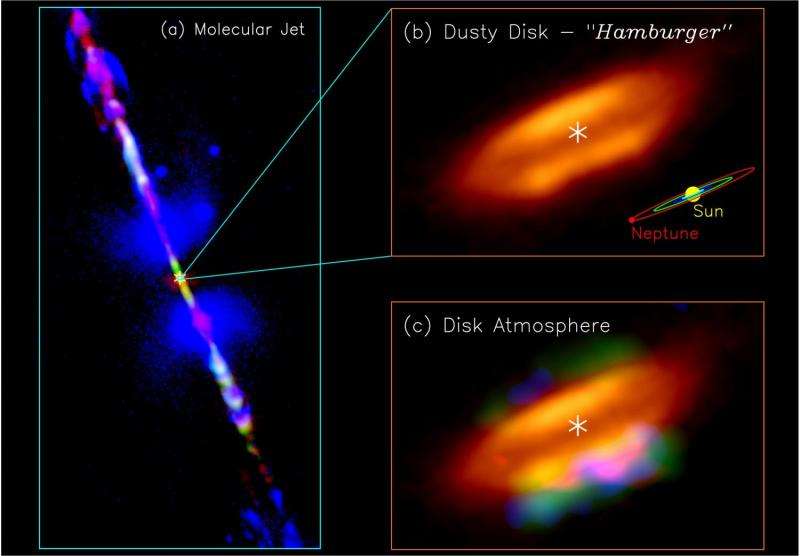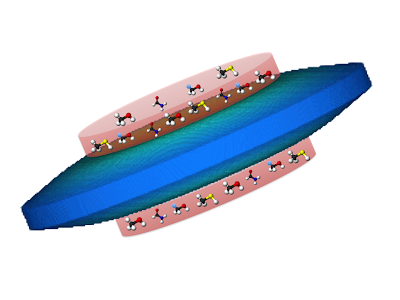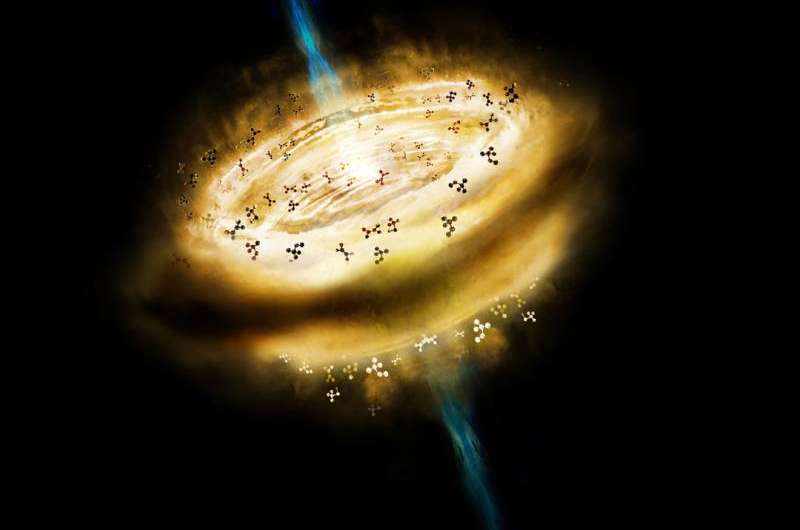Prebiotic atmosphere discovered on accretion disk of baby star

An international research team, led by Chin-Fei Lee of the Academia Sinica Institute of Astronomy and Astrophysics (ASIAA, Taiwan), has used the Atacama Large Millimeter/submillimeter Array (ALMA) to detect complex organic molecules for the first time in the atmosphere of an accretion disk around a very young protostar. These molecules play a crucial role in producing the rich organic chemistry needed for life. The discovery suggests that the building blocks of life are produced in such disks at the very beginning of star formation and that they are available to be incorporated into planets that form in the disk subsequently. It could help us understand how life came to be on Earth.
"It is so exciting to discover complex organic molecules on an accretion disk around a baby star," says Chin-Fei Lee at ASIAA. "When such molecules were first found in the protoplanetary disk around a star in a later phase of star formation, we wondered if they could have formed earlier. Now, using ALMA's unprecedented combination of spatial resolution and sensitivity, we not only detect them on a younger accretion disk, but also determine their location. These molecules are the building blocks of life, and they are already there in the disk atmosphere around the baby star in the earliest phase of star formation."
Herbig-Haro (HH) 212 is a nearby protostellar system in Orion at a distance of about 1,300 light-years. The central protostar is very young, with an estimated age of only 40,000 years—about 1/100,000th the age of our sun—and a mass of only 0.2 solar mass. It drives a powerful bipolar jet and thus must accrete material efficiently. Indeed, an accretion disk is seen feeding the protostar. The disk is nearly edge-on and has a radius of about 60 astronomical units (AU), or 60 times the average Earth-sun distance. Interestingly, it shows a prominent equatorial dark lane sandwiched between two brighter features, looking like a "space hamburger."

The research team's ALMA observations have clearly detected an atmosphere of complex organic molecules above and below the disk. These include methanol (CH3OH), deuterated methanol (CH2DOH), methanethiol (CH3SH), and formamide (NH2CHO). These molecules have been proposed to be the precursors for producing biomolecules such as amino acids and sugars. "They are likely formed on icy grains in the disk and then released into the gas phase because of heating from stellar radiation or some other means, such as shocks," says co-author Zhi-Yun Li of the University of Virginia.
The team's observations open up an exciting possibility of detecting complex organic molecules in disks around other baby stars through high-resolution and high-sensitivity imaging with ALMA, which provides strong constraints on theories of prebiotic chemistry in star and planet formation. In addition, the observations open up the possibility of detecting more complex organic molecules and biomolecules that could shed light on the origin of life.

More information: Chin-Fei Lee et al. Formation and Atmosphere of Complex Organic Molecules of the HH 212 Protostellar Disk, The Astrophysical Journal (2017).
Journal information: Astrophysical Journal
Provided by Academia Sinica




















